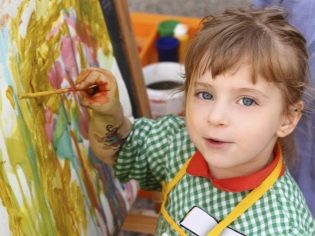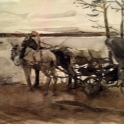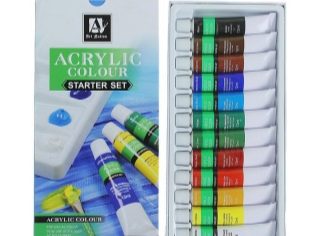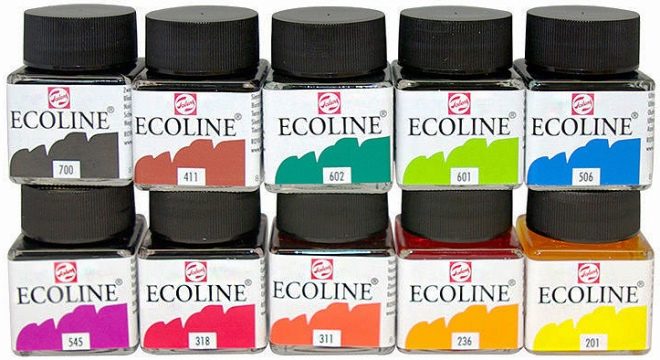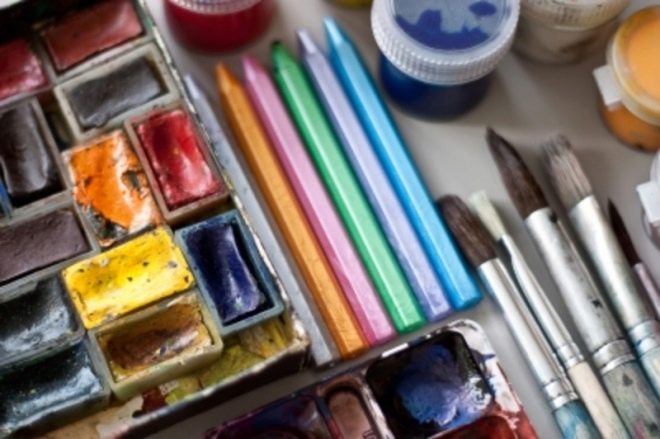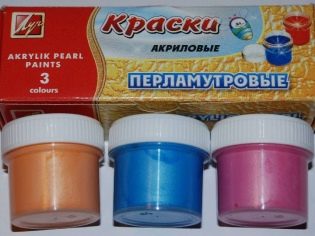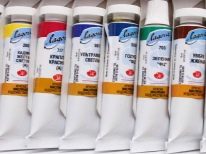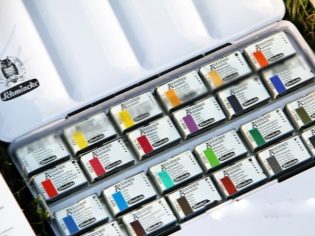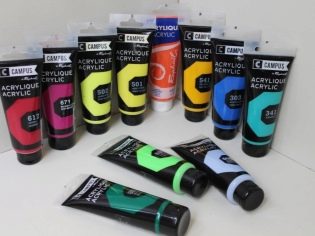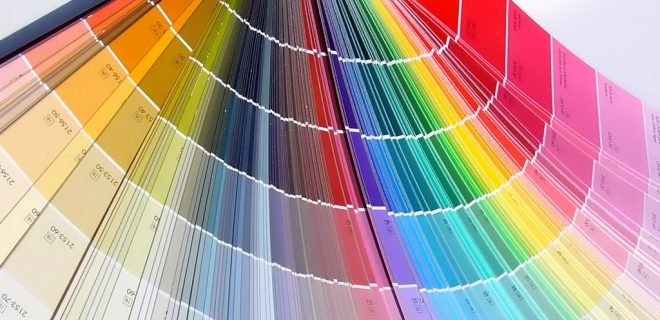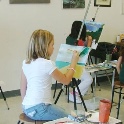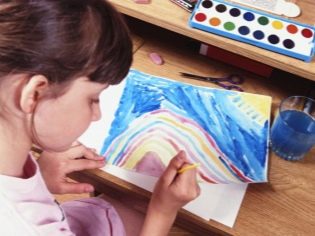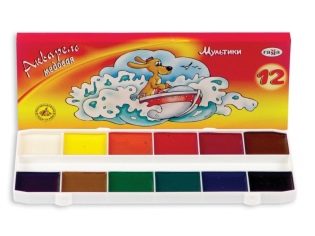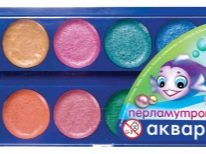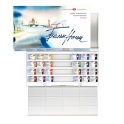How to choose watercolor paints for a child?
Drawing for many decades has been considered in our country not just a popular children's entertainment, but also an obligatory exercise that contributes to the all-round development of a child. Drawing paints included in the educational program, if not kindergartens, then any secondary schools and specialized art schools.
However, such creativity cannot be called an exclusively children's prerogative, because watercolor paints have been used by true artists for many centuries to create world-famous masterpieces, so that a child can develop his skills even in adulthood.
What it is?
The composition of watercolor is actually not something completely stable, since this type of paint has been around for a good couple of millennia and has been known in many different regions of the world, in each of which they used the ingredients that were on hand. It is possible that watercolors from different periods and corners of the world may differ radically in their components, however, in general, the name comes from the Latin word “aqua”, that is, “water” - it was she who served as the basis for all known compositions.
The dyes, respectively, also differed, because if today even synthetic substances can act in this role, then earlier they used mainly powders of plant origin. For general integrity, various types of natural glue were also added to the mixture, which allowed the substance to keep a sufficiently thick consistency.
Wherein the watercolor mixture should remain plastic and soak easily when adding waterTherefore, the addition of plasticizers is also mandatory. Those most often act as inverted sugar, as well as glycerin, the functions of which also contain at least a small amount of water so that watercolor does not turn into a real stone in the long breaks between use.
The composition of the watercolor would be incomplete without bovine bile - it contributes to the uniform smearing of the dye on the surface of the paper, since it does not have the property to roll into droplets. In modern watercolor recipes, phenol or other similar antiseptics are also added, which do not allow mold and other destructive microorganisms to infect ingredients of natural origin.
The classic composition is completely devoid of any harmful components and is completely made up of a natural product, which contributes to the use of watercolor by children.
At the same time, in the modern world, manufacturers often use different synthetic analogues, because of which some types of paints can still be harmful. It is worth paying attention, first of all, to those paints on which it is directly indicated that they are designed for children.
As a rule, they are somewhat inferior in quality to professional blends, but their composition is selected in such a way as to be completely safe and, most importantly, suitable for daily use.
The widest distribution of watercolors is caused not only by the naturalness of its composition, but also by the variety of drawing techniques it uses, each of which gives a unique result - even though the canvases are almost 100% paper bound.
For example, in England it was customary to paint on paper fairly moistened with water, while in Italy, on the contrary, they used a completely dry canvas. Today, many artists successfully combine the English and Italian techniques, achieving amazing transitions from one color to another.
The difference between techniques is also in how many layers of watercolor paint is placed on the paper. For example, technology A la prima does not imply any subsequent corrections of the pattern — the inks are applied to the wet paper as quickly as possible, until the base is dry, the masterpiece does not imply any subsequent changes. Thanks to this, a special iridescence of flowers is achieved, an extremely gentle play of light and shadow, but for this the master must be able to draw very quickly and accurately.
However, there is also a multi-layered technique of watercolor painting, in which the upper strokes are superimposed on the already dried lower ones, and the shade does not necessarily coincide, but the upper smear must necessarily be darker.
This diversity of techniques of watercolor painting does not end there, but even by the general description it becomes clear that this type of paint gives a lot of space for experimentation and multi-level development.
Story
Watercolor can be safely considered one of the most ancient inventions of mankind, which survived to the present day, at least in the works, certainly. In fact, it is the same age as paper, which has become increasingly common since its invention in the II century in China. In those days, it was actively used in traditional Chinese painting along with ink, but differed from it in composition and offered a greater variety of colors, thanks to which it quickly gained popularity.
In Europe, by the way, some similar mixtures were also used, but at first they were used exclusively for calligraphy, and later, oddly enough, for cosmetic purposes.
If we talk about watercolor for painting in the modern sense, for the first time it began to be used in Europe with the beginning of the mass distribution of paper in this part of the world.
In the Middle Ages, through the Spanish and Italian ports, this Chinese invention fell into the Old World, and it became increasingly active to replace mascara. At the same time, painting as a whole already existed, but European artists of that time used oil more actively, which was better suited for canvases and wall painting.
Around the end of the Middle Ages, the paper ceased to be a very unprecedented rarity, and with it, for watercolor, new possibilities appeared.
The first great artist who widely used watercolor in his masterpieces was German painter and graphic artist Albrecht Dürer. His work, entitled The Hare, dated 1502, is still considered to be one of the earliest examples of the use of watercolor in European painting to this day. The most interesting thing is that despite everything, drawing with watercolors was still considered a kind of daubs for a very long time, unworthy of attention, and even in the first half of the XIX century scientific works devoted to the visual arts, watercolor is mentioned only in passing.
An extremely important role in the popularization of watercolor was played by the ease of use of this type of paint, thanks to which it was already actively used in the 18th century, but not by artists, but by travelers and scientists to illustrate what they saw on their travels, glorify landscapes and display new or unusual animals.
Soon, watercolors began to be widely used for portrait painting, whose popularity was rapidly growing, and even after a few decades it would begin to push the new invention into the background - photography, the start of the popularity of watercolors was given.
They were the first to appreciate the advantages of water-based paints in England, where watercolor gained popularity already at the beginning of the last century, but here they somewhat expanded the arsenal of drawing techniques by it.
Throughout the 19th century, attitudes toward watercolor painting changed several times, since some new shades developed by enthusiasts proved to be short-lived, but in general, this century became a turning point, and watercolor finally found itself among other kinds of “serious” painting, which contributed to in particular, such geniuses as Paul Cezanne.
The tradition of watercolor painting came to Russia from England via St. Petersburg and quickly gained serious popularity.
There are a number of famous artists of the XIX century, who paid tribute to the work with watercolor paints. Among them are Karl Bryullov, Ilya Repin, Mikhail Vrubel, Valentin Serov, and even Maximilian Voloshin, who personally painted illustrations for his poetic works.
In the last century, watercolor finally entered into wide use in our country, becoming a way to implement inspiration not only for adults but also for children.
Today, no one doubts that watercolor is a serious artistic tool, although the simplest children's sets can give only a superficial idea of its capabilities. Nevertheless, teaching children how to draw with watercolors can give tremendous results in the future, and it is possible that November 23 - International Day of Watercolor - will someday become a professional holiday for them.
Properties
Somewhat disappointing and yet characteristic of modernity is that many products are not really what they are called. This statement holds true for many types of modern watercolors, especially when it comes to those of its subspecies that are advertised as children.
The composition of such a mixture is optimized for safety, which is why some of the basic qualities that a real classic watercolor should have are somewhat lost. However, you can interest the baby and this, but for a child who has already reached a certain level of skill, you will need the properties of this watercolor.
For professionals is very important matching reference colors. The famous joke says that the average man distinguishes only 16 colors, however, professional eye artists distinguish dozens of shades, and in order to mix them precisely in order to get them missing, they need a shade to fully match their name.
If the professional can still recognize the fraud and find a way to correct the situation, then the newcomer in this case will initially learn from the wrong examples, which is unlikely to contribute to a high level of skill.
An important requirement for watercolor is considered extra fine grinding of dry pigment particles. Due to this, the paint applied with a thin layer looks translucent, which is generally a characteristic phenomenon for watercolor painting; in fact, this is what makes watercolor different from other types of paints.
Uniform application It is very important for paints of any type: it is unacceptable for watercolor to be collected in droplets or to leave lumps on paper, which often makes a variety of cheap children's honey sets.
In the classic recipe, bull bile is responsible for such a mixture characteristic, but in many budget variants of modernity this ingredient is not present, which completely deprives the owner of the opportunity to write real masterpieces.
Lightfastness - Another important point for watercolor. It was precisely because many of the new shades invented by nineteenth-century English watercolorists were easily burned out in the sun that the future of watercolor was hardly threatened: a significant part of society at that time began to lean toward the view that watercolor paints were too short-lived, to consider them a complete tool for creating paintings.
Fortunately, this problem has been overcome with time, but even today some unscrupulous manufacturers produce a mass, the pigments of which very quickly lose their original brightness.
Finally, composition of the mixture should be carefully balanced so that even after a substantial drying, the watercolor can again easily dissolve in water, not setting to a stone. When it dries, it should give a solid film that would not be subject to cracking, but remained holistic.
Kinds
Modern industry is ready to present any, even the simplest, product in a variety of varieties, each of which is designed for certain highly specialized needs, and watercolor paints are not an exception to the rule.
Classic art watercolor
This watercolor was produced exclusively in the form of solid tiles, in this form it can be found today. It should be noted that for serious painting are used perhaps the best varieties of such a watercolorwhereas the typical use of it today is posters and, oddly enough, blueprints. A significant part of such products is intended for children's creativity, a set for children can include 12, 24 or 36 briquettes, the main requirement for which is not to be too soft or fragile, for which you need to find the right balance of sugar and gum arabic.
Honey is often used as a binder; as a result, a watercolor water color known to everyone from childhood, with a characteristic sweet aftertaste, is obtained.
As an alternative binder, potato syrup or animal glue is used. A large amount of the latter can give the mixture an uncharacteristic state - the ability to knead in the hands with sufficient moisture.
Paints in cuvettes
Another common option for children is the paint in the cuvettes. This concept seems strange to most ignorant people, but in fact it means that all colors are placed in small recesses of one common box.
Naturally, there are very few watercolors in such cuvettes; therefore, the professional scope of such kits is limited to making small sketches, whereas for a real large-scale painting such a quantity of paint turns out to be small. On average, watercolor is here softer than in tiles, however, it still maintains a solid state.
Semisolid ink paints
Many modern artists use semi-solid paints in tubes - the mass of each color is enclosed in its own tube with a lid, so that the shades do not mix and do not get dirty. At the same time working with this type of watercolor literally requires a palette.
The mass in the tubes is very soft and easily diluted with water, but different unstable uniformity of pigmentthat is not very striking when using multilayer painting techniques, however, requires an increased level of skill when drawing on wet paper in a single layer.
In general, this type of watercolor is used to create large-sized paintings in a classic style. It should be noted that most cheap varieties are criticized by experts for the fact that during long-term storage the pigment is separated from the binder, as a result of which the paint becomes unusable.
Liquid watercolor
A rather rare and non-traditional, but still popular option is liquid watercolor, produced in small containers and designed both for additional dilution with water and for use in the form sold.
This watercolor is distinguished by a large variety of very bright shades, even a fluorescent variety is produced.
For convenience of dosing, many manufacturers equip containers with paint droppers, dispensers.Quite often, liquid watercolor is used to work with an airbrush, but there are also such artists that use it for classical painting with a brush. It is noted that this type is especially sensitive to the presence of any impurities in the watertherefore, it is necessary to use strictly purified water when diluting.
Watercolor pencils and crayons
It is necessary to note the modern invention, which allows to combine drawing and painting on one canvas, practically without changing the technique - these are special watercolor pencils and crayons. The principle is fully consistent with pencils and crayons, i.e. paint this tool without other devices like a brush, just holding it in your hand.
At the same time, the chemical composition of the coloring part of a pencil or chalk is water-color paint, and although they leave a mark on paper even with ordinary drawing, when trying to blur with water instead of the usual picture, quite unexpectedly, a full-fledged watercolor sketch is obtained.
It is noted that, on average, it is somewhat easier to draw with such pencils than with a brush, but this, of course, is not quite a classic anymore, and the result is too classic to fail.
Watercolor pencils have a wide choice of colors and shades, and also, like ordinary pencils, can vary in hardness, but they are almost never indicated on them, so you will have to select by trial and error. For children, it is probably better to choose softer types.because they are much easier to leave a mark on paper.
By sight, watercolor pencils are indistinguishable from ordinary ones, however, manufacturers usually still leave the owner the opportunity to identify a wonder without special experiments — to do this, draw a small drop on a pencil, a brush, or directly write the word watercolor.
Based on pearlescent pigments
So far, watercolor-based paints based on pearlescent pigments remain quite rare, even though not only paper can serve as a basis for them, but also many other materials, including wood, fabric and even gypsum!
However, this type of paint should be attributed rather to decorative than to beautiful, because in the process of drying the shades very much fade, and the former brightness is replaced by the enhanced brilliance characteristic of mother of pearl.
Brands
Every self-respecting artist has a clear idea of what he needs to translate his own creative ideas, and he certainly knows how to choose his own colors. In the case of buying a watercolor for children, everything is much more complicated: parents rarely know a lot about such products, because they are guided either by the inscription “children's watercolor” or they choose at least relatively well-known brands.
As for the purpose for children, professionals here are usually skeptical: according to them, such a product cannot be called watercolor at all and for at least relatively high-quality education it does not suit in any way.
As for brand orientation, there is a sense in it, however, for this you need to understand something in the range of popular manufacturers.
- In particular, names such as “Gamma”, “Ray” or “Lighthouse” many people have heard, and even professionals agree that such a watercolor is a good way to learn to paint. At the same time, the same “Gamma” positions its products as professional. But the category of consumers to which these products are supposedly oriented, categorically disagree.
Therefore, if we take the domestic watercolor for the first steps, the preference should be given to the above-mentioned brands.
- If the child has already reached a certain level at which the need for more serious means becomes apparent, you should pay attention to the brand’s products. "Neva Palette". This manufacturer has been known in our country for several decades and has been listed by professionals at all levels. In particular, at the time when imported goods were unavailable, it was the Neva Palette that was the favorite watercolor of Soviet watercolorists. The paints of this brand are sold both in sets and individually - in separate cuvettes, which allows you to optimally organize the use of each shade.
- Sets called Sonnet and White Nights are considered equally relevant for both professional painting and children's art, but "Ladoga" is already on a higher level, since it is designed for real artists, as well as for those who seriously want to become them.
- If we talk about foreign competitors, today, their products, fortunately, are adequately represented on the domestic market, and the Dutch company has distinguished itself by its particular popularity and breadth of product range. Royal talenswhose history goes back over a hundred years. Among the products of this brand stands out three well-known brands - Van gogh in cuvettes and tubes, Rembrandt (this brand produces not only watercolor, but also other types of paints), as well as liquid watercolor paints Ecoline.
- In Germany, paint manufacturers also do not mind taking on some of the glory of great artists, and if the Dutch at least used the names of Dutch painters, the Germans called their brand Da Vinci. Again, this company produces not only watercolor, but its clear advantage is that it immediately divides its products for potential use, producing separate paints for beginners and for craftsmen.
- Of the German products are often praised also Akademie Aquarell from the Schmincke brand, but in our country, they are not used not only by children, but also by the overwhelming majority of professionals, because these are premium paints that cost from $ 130 per ditch.
- French painting is known all over the world, and, although the local creators of masterpieces are better known for oil painting, yet in this country there is a brand that produces high-quality water-based paints. Local giant Sennelier most famous for two watercolor sets, one of which Sennelier Artists includes 98 shades at once and can hardly be given to a child.
- But the other Raphael, is no longer a pipe dream with still very high quality.
- Although the first impetus to the large-scale popularization of watercolor was given precisely in England, the English flagship in the industry - Winsor & Newton - known in our country much less. At the same time, his traditions can not fail to impress - a professional chemist and an avid artist, whose surnames became the name of the company, joined forces to produce the best paints almost two centuries ago!
Today, this company offers its products, divided into two main classes: cotman - for solving relatively modest tasks and artist - for writing masterpieces of the highest level.
Colors and texture
With careful selection of watercolors, even indicators such as color and texture of the mixture play an important role. For any beginner, this concept will seem simple - the more colors, the better, and the texture is not so important, but in fact everything is much more complicated.
In particular, the presence of a large number of colors in the set seems to be considered a plus, but in practice, sometimes these colors are not very high quality.
It should be understood that manufacturers usually make extensive use of the physical definition that all colors and shades on earth are the result of mixing green, red and blue in certain proportions. Actually, most companies use only three colors of pigments, and everything else that is in the set – this is no longer a pure tone, but the result of mixing.
In principle, professional artists themselves often select the right shade by mixing the available, and not by desperate searches in all stores, but the question remains about the quality of the pigments used and the degree of mixing.
In the case of using low-quality ingredients, as well as during long-term storage, the probability that the mixture will stratify over time increases, and instead of the expected color, a set of initial tones unevenly distributed will be obtained.
For this reason, when choosing, it is worthwhile to compare several sets precisely in terms of the quality of the color palette. Here we should focus not on the number of colors in each of the sets, and on the results of comparing two identical colors from different sets. The more homogeneous the tone, the more arguments should be in favor of this particular set.
In addition, it is necessary with a certain caution to treat too juicy shades of watercolor, since it is not for nothing that these colors are called “poisonous”.
Of course, there are world-famous manufacturers who manage to achieve such results without any unclean tricks, however, in the case of cheap sets, excessive brightness may directly indicate the active use of harmful chemistry, which is completely unacceptable in the case of children.
In addition, it is very important to ensure that the colors of different colors mix well with each other. Only in this way the color palette, even from a small set of colors can be brought to infinity. This fact is influenced by such an indicator as dispersion, that is, the degree of pigment grinding: the smaller it is, the better. To determine the dispersion of the eye is hardly possible, so there will have to rely on experience, and the easiest way to compare is by how white watercolor dilutes other colors.
In this case, the dispersion also affects the texture of the pattern: for small particles of the coloring matter, smears are light, airy and transparent, characteristic of watercolor painting, while for large particles the brush leaves thick, opaque traces.
How to choose?
If every professional artist can have his own concept of an ideal watercolor, then the best children's paint for drawing can be determined by general inquiries, which are formulated not only by children, but by their parents. However, even parents do not always have a clear idea of how a good children's drawing set should look, so this topic requires more detailed study:
- In particular, it should be understood that even manufacturers label their products as either children's or artistic. For a school, it is better to buy children’s species, even though they are significantly inferior to their artistic colleagues by all creative indicators.
- But in such children's paints there is one clear advantage that watercolor does not always have for serious painters - working with them does not require any serious skills in water breeding. Simply open the box, moisten the brush in the water and start drawing.
- As for artistic watercolors, it is designed mostly for professionals, at least for children who attend art school, or at least show great interest in drawing and demonstrate natural talent.
- As for the very popular honey colors designed for the smallest and still very curious artists, they are completely focused on the ecological purity of their composition. Dextrin (corn glue) is used as a binder, molasses and sugar also have a significant amount of weight in the composition.
Many manufacturers are positioning such a product as completely safe for the child, but most of the recipes include preservatives designed to preserve the nutritional components of the mass in their original form.
Many buyers of paints for children in the selection process are also guided by the number of colors, and there are also certain rules. For example, children under 5 years old in their first exercises will have enough even a primitive set of 6 colors, because the subtleties of shades for most of them are still alien and the most important thing for them at the moment is to smear, but more brightly.
At this stage of development, the most important thing is not to achieve certain obvious successes, but only to interest the child in the painting process, to try to teach them to hold the brush in their hands, and simply to show the very principle of drawing with it.
In particular, because of preservatives, such a watercolor is not worth it in the mouth, so parents need to be on the alert.
About from the age of 6 years A child can buy sets of 12-18 colors, since now the baby is well aware of the color palette, is able to memorize a large number of shades and use them for its intended purpose.
For children of secondary school age and older choose paint yourself no longer worth it. If they are really engaged in drawing seriously, they should better understand what they need, and certain knowledge by this point will already be gained.
It has already been written above that watercolor paints are currently produced in a wide variety of forms, which are designed for different methods of use. Given the specifics of children's creativity, it is best to give preference either tiled watercolor or paints in cuvettes, because this form is quite compact and allows you to carry a set always with you.
At the same time, the parents should also pay a lot of attention to the box, if only they are not eager to repaint the baby’s briefcase in all the colors of the rainbow as quickly as possible.
It is desirable that the packaging was made of waterproof materials (for example, from plastic) and be sure to close tightly, not allowing the contents to be poured out. This is especially true in the case when the child does not have a palette, that is, in 99% of cases. In this situation, the kid has nothing left to do except to dilute with watercolor with water directly in the cuvettes, after which a large amount of colored liquid remains in them, tending to soil everything around.
For a successful and neat drawing with watercolors, you probably will need not only the paints themselves, but also related products. First of all, brushes - you can talk for a long time about how such an accessory is chosen correctly, but in short it is necessary to clarify that those samples that are sold in the cheapest sets together with paints are very little suitable for drawing even at the most primitive level.
To achieve more or less acceptable results, the child will need at least three brushes. If the kid is engaged in drawing professionally, it makes sense to buy him a whole set, but in order that he does not soil the insides of his bag with them, you should buy him a special case for storing brushes.
By the way, it is possible to criticize for a long time incorrectly chosen paints or even a kid for the fact that he did not learn to draw, and the wrong canvas will be the cause of the failures. Today, standard drawing books have gained immense popularity in general education schools, which, on the one hand, are theoretically suitable for painting with watercolors, on the other, they do not correspond to this task more than the cheapest paints and stupid brush from the set with them.
Any professional artist will confirm that it is best suited for watercolor painting. lightly ribbed paper of medium thickness - sufficient so as not to get wet completely when macerated with water. If the paper does not meet the last criterion, then at least one of the common watercolor painting techniques will remain inaccessible to the child.
It is very easy to check the suitability of the sheet for this parameter - just leave a very wet color smear on it and see if the paint appears on the reverse side. If yes, then you should be more careful about the choice of paper in the future.
Reviews
Painting with watercolor managed to so firmly enter the everyday life of our fellow citizens that it was not so easy to find argued opinions about this product, even though literally everyone used it at least several times in their lives.
At the same time, child development experts point to the great importance of using watercolors for the development of children from a very early age, because thanks to the naturalness of their composition and ease of use, Watercolor paints are available for children starting around the age of two.
Because of the specific nature of drawing with paints, watercolor is considered more conducive to the development of fine hand motor skills than the same pencils. Even the occasional mixing of paints in childhood can clearly show the child that Two ingredients in total can give a rather unexpected third result, unlike their source code.
If the child reaches the level of creative development, when he can independently purposefully mix paints in order to obtain a concrete desired shade, this will help him to more actively develop his own mental activity, as well as fantasy.
As for parents, they usually indicate a rather high interest of children in the art of watercolor painting. In the watercolor of kids attracts a large number of available shades, as well as their extremely high miscibility, which gives plenty of space for experimentation.
Children a little older, seized at least some of the basics of drawing paints, very much like to paint with watercolor because of the lightness, airiness of the finished results, which seem translucent.
At the same time, it is much easier to paint with watercolors at home than, for example, with oil paints, since watercolor does not need a chemical solvent that is dangerous for children, does not have a harmful odor and is divorced in an extremely primitive way that is accessible even to the smallest.
If we talk about the brands that are preferred by the absolute majority of parents, then this is, first of all, domestic "Gamma" and "Ray". The reason for the popularity of these brands lies on the surface: their quality is quite enough for education at the level of an ordinary school, and the low cost, the width of the range offered and the widespread availability literally make you choose in their favor.
With those children who learn to paint with watercolors on a more serious level, the situation is no longer so straightforward, since their teachers and they themselves usually prefer better paints, but there is no unity in their choice.
Of the more budgetary, but fairly high-quality even for the professional level, it is worth highlighting the St. Petersburg products "Neva Palette", However, quite often in the process of learning inexpensive specialized kits for beginning artists produced by global brands are used.
About what watercolor colors to choose for the child, see the following video.


